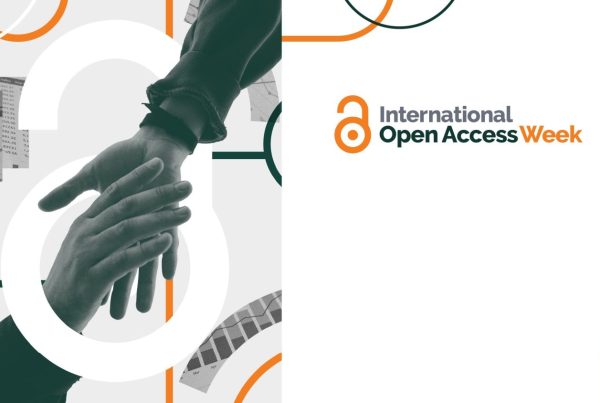This post is one in a series about the Libraries open access (OA) principles, as outlined in Towards Open Access at the University of Minnesota (z.umn.edu/TowardsOA). The Senate Library Committee (SLC) issued a statement of support in November 2021 and a number of Senate Committees have endorsed the SLC’s statement.
In our statement of principles for open access (OA), the University of Minnesota Libraries states that we prioritize OA publishing models that are open, equitable, transparent, and sustainable. Here we will focus on three aspects of such models. OA publishing models should:
- Use transparent, equitable pricing structures that pay for the cost of scholarly publishing and reasonable service development, helping us meet our obligations to be responsible stewards of University budgets;
- Allow for sustainable cost increases;
- In the case of journals, eliminate the revenue stream of article processing charges (APCs), which are often paid on top of subscriptions.
Unfortunately, many current OA publishing models do not align with these principles.
The cost of publishing
Publishing has costs—journal publishers must pay for systems for managing the submission, peer review, and publishing operations; editors may be paid; there are costs for distribution, even for electronic-only, open access journals; publishing organizations must pay taxes; and a surplus is necessary to support future improvements. However, few publishers provide transparency around their operating costs, many seek unsustainable price increases each year, and with some OA publishing models, publishers are receiving two streams of income by charging fees for making individual articles OA on top of subscription fees.
Lack of transparency
Academics and librarians have little insight into the operating costs of the journals in which they publish. The largest publishers, both commercial and not-for-profit, rarely provide details about their costs. With OA publishing, prices are often seen in the form of article processing charges (APCs), fees paid to make an individual article OA. One might expect that APC prices are directly based on the costs of publication, but that’s not always the case.
According to the publisher Wiley, “APCs are set according to careful market analysis of the journal’s subject area including the availability of funding for APCs, community support for OA, and the positioning of the journal relative to competitors […] and other titles within the relevant subject community.” The actual cost of publication was not listed as a factor in setting the price.
Similarly, Taylor & Francis “set APCs based on funding patterns within the field, as well as benchmarking against APCs on related journals to ensure that rates are realistic for communities” and that “the geography of submissions allows us to price fairly to market.” Again, cost of publication was not listed as a factor.
Many publishers have also been vocal about not sharing cost data. Price transparency was a major point of Plan S, with 2 of the 10 principles addressing transparency in cost and price. cOAlition S commissioned an independent group to develop an OA price transparency framework. During the process, publishers expressed concerns about the effects of price transparency on their operations—effects on their income, specifically, not on the quality of the research in their journals. Note, this isn’t all publishers; several publishers have participated in the Fair Open Access Alliance‘s Breakdown of Publication Services and Fees.
Publishers’ concerns are directly at odds with the purpose of academic publishing and the mission of the University of Minnesota. Concerns that price transparency could conflict with “fiduciary duties to charity/shareholders” or create “downward pressure on prices” are irrelevant to the University’s mission to share the knowledge created by our researchers to benefit “the people of the state, the nation, and the world.”
The unsustainability of prices
Subscription prices are unsustainable. Library Journal publishes an annual survey of journal prices and has reported price increases between 4% and 7% annually over the last 5 years. At the same time, most libraries’ budgets have been shrinking, whether in real terms or as compared to inflation.
Within OA publishing, APCs are unaffordable for many researchers. Although the majority of fully OA journals do not charge APCs, many from the largest academic journal publishers do. Current average prices for fully OA journals range from $1900 to $2500 (based on prices available from Wiley, Elsevier, Springer Nature), and can reach even higher—more than $6,000, for Nature Communications. The current average price of an APC for a hybrid OA journal ranges from $3300 to $3500, and up to $11,390 for Nature’s hybrid journals. Prices have been increasing consistently, at a high rate of inflation since the early 2010s.
APCs on top of subscriptions
Over the last decade, some publishers began offering “transformative agreements”, often in the form of “Read & Publish” (R&P) agreements. In an R&P agreement, a central body (the library, the institution, or consortium) pays one fee to the publisher to access all of the subscription materials (Read) and one fee for the articles published by their authors to be published OA (Publish). From the publisher and author perspective, this approach simplifies the process—the author does not have to go through a financial transaction for each article they publish nor does the publisher have to manage individual payments.
Transformative agreements are, by definition, for hybrid journals, as the aim is to transform to full OA. The Publish component of an R&P agreement is typically based on the number of articles published in previous years and some factor(s) related to APCs. Publishers say that R&P agreements save money, by comparing the price to what the total sum of APCs would be for the articles covered by the agreement. This is despite the fact that there is no clear relation between the APC price and the costs of making articles OA, and in many cases there are ways for authors to make their work openly available without paying any fee.*
“Offsetting” was one of the key features promoted by publishers for the first transformative agreements. This was the notion that as institutions paid more for publishing, the amount they would pay for reading access (subscriptions) would decrease, because more content would be OA. In other words, publishers wouldn’t “double dip” (charge twice for an article). If an article has had an APC paid to make it OA, it should not be counted as part of the content paid for in a subscription. Although publishers have said that they do not double dip, we are still seeing annual price increases, regardless of how much content is OA each year.
What’s next?
The Libraries are participating in a few R&P agreements, primarily through the Big Ten Academic Alliance. These pilot agreements increase the amount of UMN-created knowledge that is available for anyone to read and use, which is a laudable outcome and helps us meet our mission. But we have concerns about the long-term sustainability of these and the impact they will have on the publishing system as a whole [Read more about the potential negative effects of pay-to-publish models].
There is not currently an OA model that meets all our priorities and values, that can be adopted by all publishers, so the Libraries is experimenting with new publishing models, including support for infrastructure and models that are more clearly based on the costs of publishing.
*We encourage authors to take advantage of the many ways they can make their work open at no cost.




